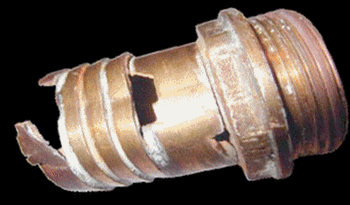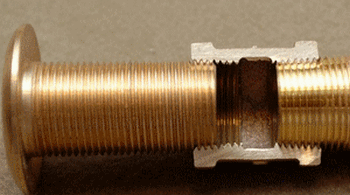I do not see that such factual information is at least no disadvantage?
Perhaps not, but I still don't grasp what you would use more precise information for. Are you intending to go take a boat to it's very limits? Might even be a disadvantage if one made an assumption based on stability tests at the time of build and then were loaded much differently.
You know that an A likely can handle more than a B and would be more comfortable in rough seas. We have a classed boat with all the stability testing and charts, so we know it's built to a certain standard, but beyond that we don't use the exact information. We don't tilt to the maximum it will handle just because we can. We aim for the least we can achieve.
We're not going to try to cross an ocean in a CE-B but never seen one with the range anyway, and the boat likely would be able to take far more than the crew could. The weakest points in ocean travel of pleasure boats are not the stability. It's a lot of other construction factors that could doom one first. Windows, engine room vents, hull fittings, shafts, propulsion, fuel.
Back to your Nordic Tug. It has many areas problems would surface before stability would be an issue. You say you found it to be very good in rough weather. How rough? I would not consider it a boat for rough seas. It's CE category doesn't indicate it is. Now, is it fine for what it's owners will put it in? Yes. 6-8', even 10' it can handle fine but it would be miserable and I don't know anyone who would take it into 10' wind waves intentionally. It's a great boat. It's not a passage maker or ocean crossing boat. Tad pointed out the issues that would surface long before stability.
Very few ocean tragedies or sinkings have anything to do with stability. El Faro didn't go down because of instability. It went down because of lack of propulsion and taking on water. Now, Baden had a stability problem, but it never made it off the ramp.
You don't want to find out the stability limits of a Nordic Tug. Fact is, you won't ever find that out, because some other serious issue would surface before stability would. Stability and seaworthiness are not synonymous. It's just one factor.
Now the only available stability numbers would be from the factory. But they would only be accurate for the tested boat or designed boat under those conditions, not necessarily for your boat or any other actually on the water.













 I ask you to take a look at this link point with 4 pieces of the same weight and length of various shapes can be found in boat hulls A, B, C, D. below GZ-curves for these boats. Explore the behavior of various boats Curves, for me, this explains the behavior of the ship's lateral swell all how the vessel would behave and what they can expect before it's too late liiana, to sink or fall over.
I ask you to take a look at this link point with 4 pieces of the same weight and length of various shapes can be found in boat hulls A, B, C, D. below GZ-curves for these boats. Explore the behavior of various boats Curves, for me, this explains the behavior of the ship's lateral swell all how the vessel would behave and what they can expect before it's too late liiana, to sink or fall over.
 Thank you or answers and links, A lot of lessons to be learned from each!
Thank you or answers and links, A lot of lessons to be learned from each!